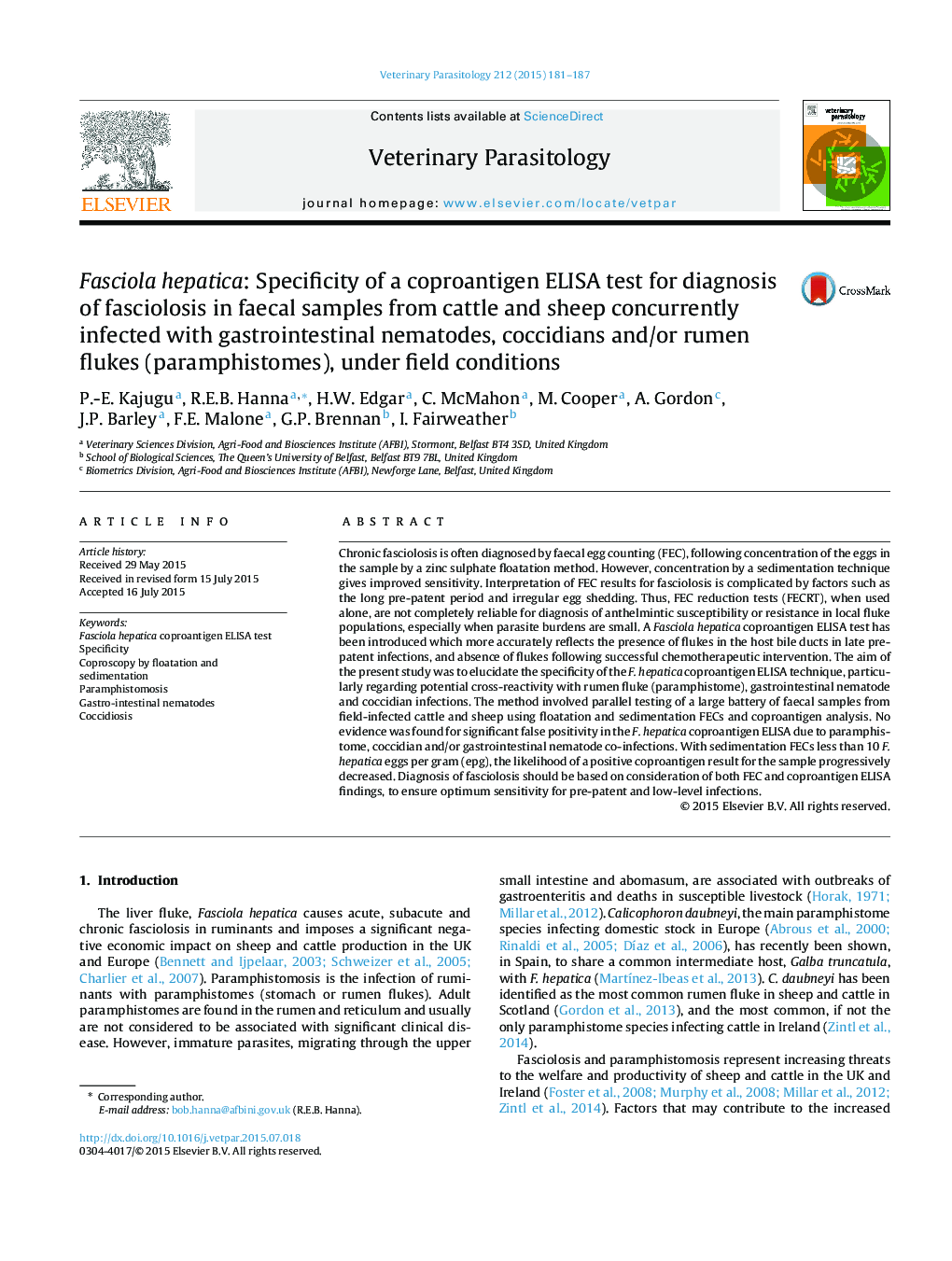| کد مقاله | کد نشریه | سال انتشار | مقاله انگلیسی | نسخه تمام متن |
|---|---|---|---|---|
| 5802348 | 1555666 | 2015 | 7 صفحه PDF | دانلود رایگان |

- Faecal egg counts and Fasciola coproantigen tests were performed on ruminant faeces samples from farms.
- Samples were analysed for nematode, coccidian, rumen and liver fluke infection using floatation and sedimentation coproscopy.
- No significant cross-reactivity due to co-infecting parasites was found in Fasciola coproantigen testing.
- Reasons for non-conformance between faecal egg counting and coproantigen testing on parallel samples were considered.
- Coproantigen testing is verified as an adjunct to faecal egg counting in coprological analysis.
Chronic fasciolosis is often diagnosed by faecal egg counting (FEC), following concentration of the eggs in the sample by a zinc sulphate floatation method. However, concentration by a sedimentation technique gives improved sensitivity. Interpretation of FEC results for fasciolosis is complicated by factors such as the long pre-patent period and irregular egg shedding. Thus, FEC reduction tests (FECRT), when used alone, are not completely reliable for diagnosis of anthelmintic susceptibility or resistance in local fluke populations, especially when parasite burdens are small. A Fasciola hepatica coproantigen ELISA test has been introduced which more accurately reflects the presence of flukes in the host bile ducts in late pre-patent infections, and absence of flukes following successful chemotherapeutic intervention. The aim of the present study was to elucidate the specificity of the F. hepatica coproantigen ELISA technique, particularly regarding potential cross-reactivity with rumen fluke (paramphistome), gastrointestinal nematode and coccidian infections. The method involved parallel testing of a large battery of faecal samples from field-infected cattle and sheep using floatation and sedimentation FECs and coproantigen analysis. No evidence was found for significant false positivity in the F. hepatica coproantigen ELISA due to paramphistome, coccidian and/or gastrointestinal nematode co-infections. With sedimentation FECs less than 10 F. hepatica eggs per gram (epg), the likelihood of a positive coproantigen result for the sample progressively decreased. Diagnosis of fasciolosis should be based on consideration of both FEC and coproantigen ELISA findings, to ensure optimum sensitivity for pre-patent and low-level infections.
Journal: Veterinary Parasitology - Volume 212, Issues 3â4, 15 September 2015, Pages 181-187